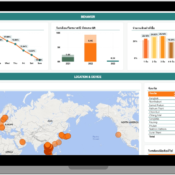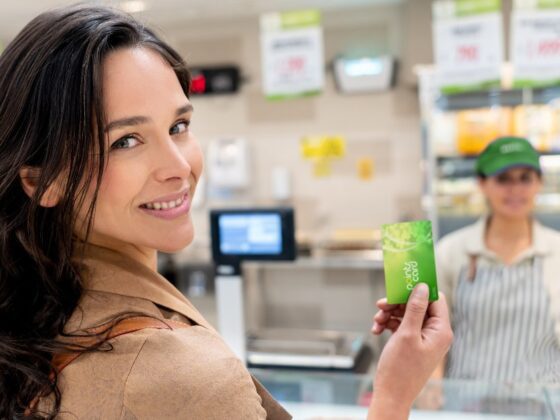What should an ideal Consumer Journey be like?

“Mr. A wanted to buy a DSLR camera, so he searched on Google and learned about Canon cameras. He then visited the Canon website, checked out a few pages, and forgot about it. A few days later, he saw an ad for the same camera on Facebook. He clicked on the ad, added it to his cart, and decided to buy it later after asking his friend. The following Sunday, he received an email from the same website with a 5% discount on the same camera for a limited time. This offer excited him and he decided to take the offer and finally buy it. Later, Mr. A told his cousin to buy the same model as he was impressed with the quality of the images taken with that camera. They both started taking impressive photos and became the National Geographic Photographer of the Year.”
Has this ever happened to you? We are sure it will!
And here is the Consumer Journey that takes place in the digital age with diverse Touch Points, starting from the first interaction with the brand to the final purchase, or even post-purchase in the form of after-sales service. This is the Consumer Journey that unfolds in the digital era with a variety of Touch Points, spanning from the initial brand interaction to the ultimate purchase and, in some cases, even post-purchase in the form of after-sales services.
The 5A’s of Marketing” or “The Five A’s” was described in the book “Marketing 4.0” by Philip Kotler. Don’t think it’s outdated. Now they’re going “Marketing 5.0”. But it turns out that the teachings of the marketing master Philip Kotler can still be used.
The 5A’s of Marketing that have been mentioned, consist of Aware → Appeal → Ask → Act → Advocate. Let’s start by digging into each one.

1. Aware: Creating awareness of a brand for customers.
This is the first time that potential customers become aware of a brand. They may encounter the brand through ads, recommendations from friends, or their own searches. This is the brand’s first impression on the customer. The first impression depends on the satisfaction of the potential customer. Then, this group will move on to the next stage. In the example, Mr. A searched for cameras on Google and found the Cannon website.
2. Appeal: The customer starts to be interested in and need the product or service of the brand.
If the first step of creating awareness is done well, meaning that the ads are interesting enough, potential customers will move on to the second step, which is appeal. Potential customers are impressed with the brand’s products and services and want to know more information.
3. Ask: Finding information and asking questions to support customer decisions.
If a product or brand remains exciting, it will create curiosity in the minds of potential customers and encourage them to ask and want to know more about the product by contacting the brand through social media, checking reviews, visiting the website, or going to the store. In the example, Mr. A chose to ask a friend who is a photographer about the camera before making a purchase.
4. Act: The customer’s decision to purchase and use the service.
If a brand does its ads well, potential customers will be attracted even if they ask a lot of questions. In the end, potential customers will make a purchase and become customers. This is possible for both online and offline purchases. In the example, Mr. A was happy to make an online purchase after receiving a discount via email.
5. Advocate: Converting loyal customers into brand ambassadors.
This is the final step. After purchasing a product or service, customers will check if the product meets their expectations or if the after-sales service is good enough. This experience will create an opinion in the customer’s mind. If the customer is satisfied with the purchase, they will eventually become a brand advocate, a brand advertiser. This means that the customer will spread the word with good reviews about the product or service, attracting more customers. On the other hand, if the customer is not satisfied, they may write a bad review to prevent their friends or others from buying. In the example, Mr. A is satisfied with the purchase, so he told his cousin to buy the same model.
The interactions of customers at each stage help us understand whether the brand, product, or service is doing the right or wrong thing
For example, if the number of people who enter the “Advocate” stage decreases after the “Act” stage, it means that our product is not good enough and customers are not satisfied, which will reduce brand loyalty.
Let’s look at another example. If there are more people in the “Ask” stage than the “Appeal” stage and fewer in the “Act” stage, it may mean that our ads or communications are not clear. This makes potential customers ask and research more about our products on their own. In the end, the product does not meet their expectations. Therefore, the number of people in the “Act” stage will decrease even more.
Sometimes, customers may skip some steps or go back and forth. For example, purchasing simple products that skip the “Ask” stage and purchase immediately for speed. This depends on how clear the information is provided by the brand.

The ideal consumer journey is in the shape of a bow tie (Aware → Appeal → Ask → Act → Advocate). It is able to convert all “Aware” customers into “Advocates” and all “Appeal” customers into “Acts”. The “Ask” stage should be as small as possible. Therefore, what brands need to do is to try to adjust the customer ratio to follow the bow tie as much as possible.
Reference: Marketing 4.0, Panasm.com
If you are interested in the services of Birth Note, you can inquire for more information by calling 099-564-5947, 096-142-9547 or email [email protected] for us to contact you back.












